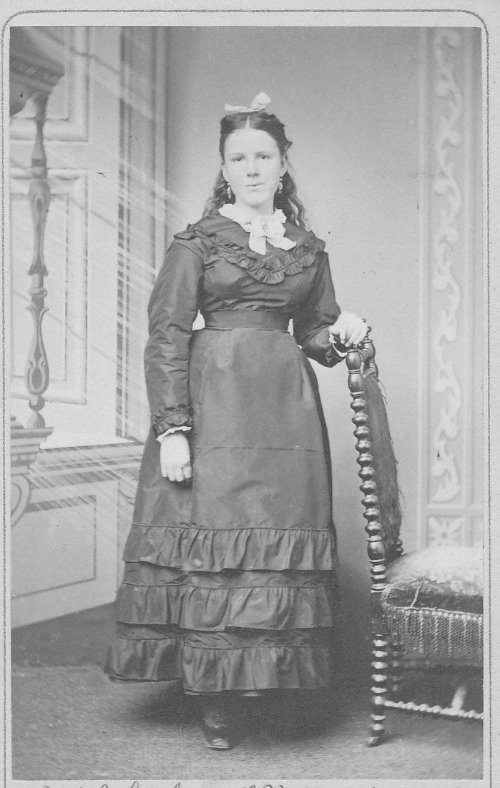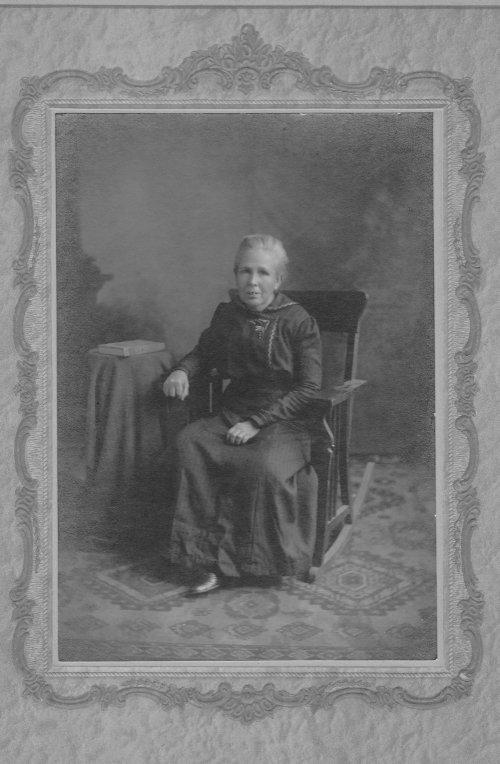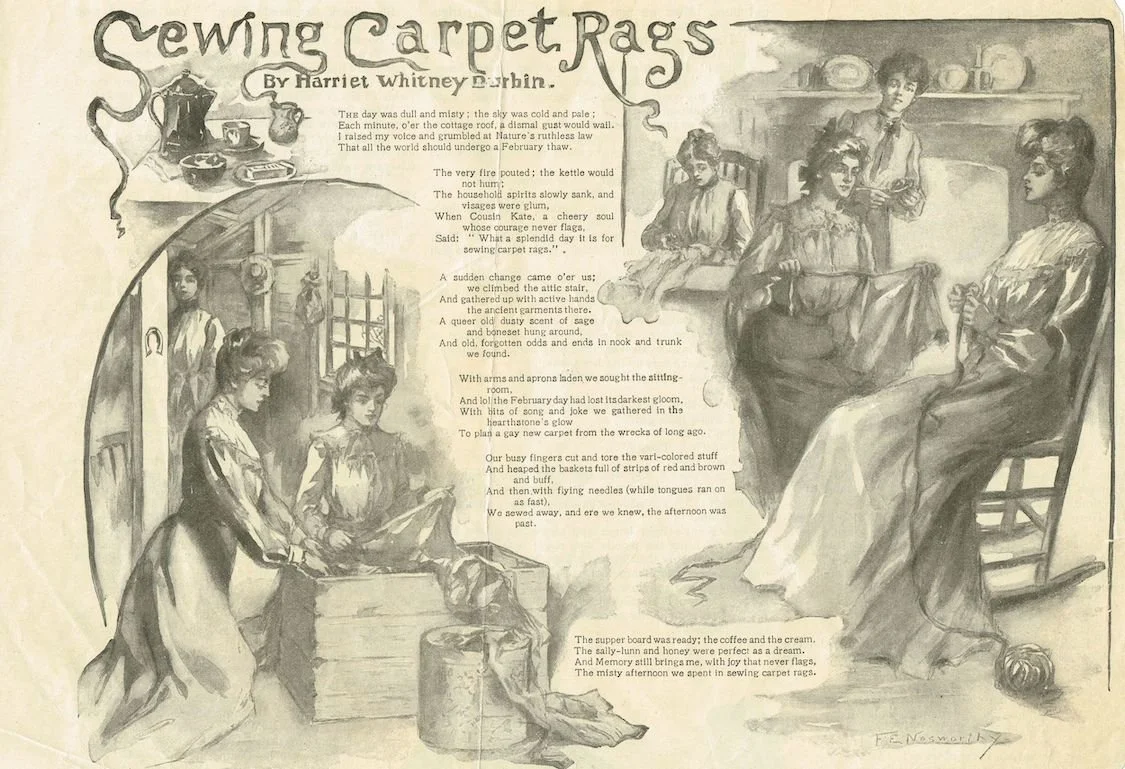Sewing Carpet Rags
My great-grandmother, Hattie Story Sala, wove rag rugs to support her family.
Here is Hattie Story at 16, and (guessing from her dress) in her 60's.
By the time I came along little remained of this legacy. The house with the loom in the third story was sold shortly after my birth. I don’t know if the loom was still there when the house was sold. Maybe my sisters remember. All that was left when I was growing up was a dusty spool of black thread that my mother told me was “carpet warp.”
There was also a steamer trunk with old clothes that we used for Halloween costumes. I knew that no woman in my family had ever been so fast as to wear a beaded flapper dress. Where did it come from? Mother told me that it was probably from our better-off San Francisco cousins. They regularly gave their cast-offs to Grandmother Sala to be cut up as carpet rags. But a beaded dress could not have been used for that, so into the trunk it went, along with a buff colored driving duster (but no goggles!), an old pair of gym bloomers and a moth-eaten beaver fur hat.
I didn’t understand how anyone could support a whole family weaving rugs. Mother explained that these were no little bed-side throw rugs or bath mats. Most houses were built out of pine or, in California, redwood. Well-to-do people could afford finished hardwood floors, but most people had floors of construction grade timber.
The rag rugs would be woven in long strips, cut to the length of the room, and then stitched edge to edge for the width of the room. The resulting wall-to-wall carpet completely covered the splintery softwood floor. These rugs were not a luxury, but a necessity!
I imagine that my grandmother Mamie, along with her sisters Edith, Cordelia and Muriel were no strangers to the work of cutting or tearing rag strips and then stitching them into long pieces that could be woven. In my grandmother’s papers - that became my mother’s, that became mine - was a magazine clipping with a nostalgic poem titled “Sewing Carpet Rags." I do not know where it was published or the year, but it must have been before 1912, when the author married and started writing under a different name.



